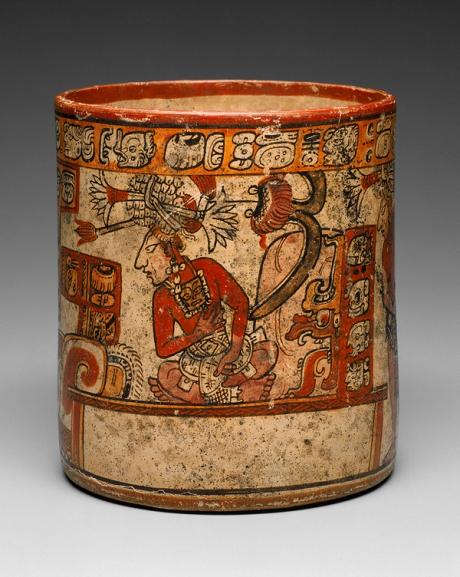Maya used aquatic plants in sustainable water purification system, study suggests


Archaeologists have posited that water lilies were used to clean ancient reservoirs—still-water systems that were susceptible to algal growth that would have made the water undrinkable—during the Classic Maya period (AD250-900). These ancient water filtration insights could offer sustainable solutions for a world in which contamination and global warming are making potable water increasingly scarce.
Water lilies appear throughout Maya iconography and are associated with kingship and power. The plant is commonly found on bodies of water in the area today. “Water lilies indicate clean water, but they are remarkably sensitive plants that cannot grow unless the water is already clean,” says Lisa Lucero, a professor of anthropology at the University of Illinois at Urbana-Champaign. “A few years ago, I considered this fact more closely and realised there had to be more aquatic plants at work.”
The Maya system parallels today’s artificially created wetlands
Archaeological records of sophisticated reservoir systems across Central America attest to how the Maya coped with annual dry seasons. These ancient reservoirs, like others in Cambodia and Sri Lanka, sustained populations for over a thousand years, but how exactly was the water in them kept clean? A new study by Lucero—plus her forthcoming book—suggests that the Maya used aquatic plants to purify their reservoir water, a system that parallels today’s artificially created wetlands.
Water is power
Lucero began her work on the Classic Maya 35 years ago. She initially approached the topic with an interest in how people gain influence over others. “In political systems, power rests on climate instability and, in ancient cultures, power was asserted with the control of water,” she says.
Water was particularly important in the southern lowlands of Central America, the focus of her research. Despite heavy seasonal rainfall, there is little surface water in the region because of the porosity of the bedrock, and people would have had to store rainwater to survive the annual dry seasons, let alone storms and drought.
“None of the largest and most powerful cities—like Tikal and Naranjo in Guatemala, Caracol in Belize and Calakmul in Mexico—were built near rivers or lakes,” Lucero says. “I was fascinated with reservoirs and knew they were necessary for survival and power, but my question became, how did ancestral Maya keep water clean? And can this knowledge help us today?”
“Ancient Maya reservoirs are perfect examples of traditional ecological knowledge we can apply to support clean-water systems today”
Using published cases and insights from her Maya associates in Belize, she examined evidence from excavations—sediment cores and settlement maps, as well as current wetlands and the imagery and iconography of Maya visual culture. She also sought insights into how ancient Maya reservoirs functioned by considering how modern constructed wetlands exploit natural processes and the microbial assemblages in vegetation and soil to treat dirty water. After speaking with civil engineers, she posited that these ancient reservoirs operated as constructed wetlands and used aquatic plants to clean water. While organic remains are rare in archaeology, the high biodiversity of aquatic plant life in the seasonal swamps and wetlands of Central America today suggests such an environment would have thrived thousands of years ago.
With climate change causing devastating global events that are increasing in frequency and intensity, communities need to find ways to protect natural resources, including water. Ancestral Maya knowledge of how to maintain reservoirs without the use of chemical- and fossil fuel-based products could be key to the future of clean water.
“The Maya and their ancestors have been living there for almost 13,000 years that we know of,” Lucero says. “Ancient Maya reservoirs and Maya knowledge of plants are the perfect examples of traditional ecological knowledge we can apply to support clean-water systems today.”
Source link





